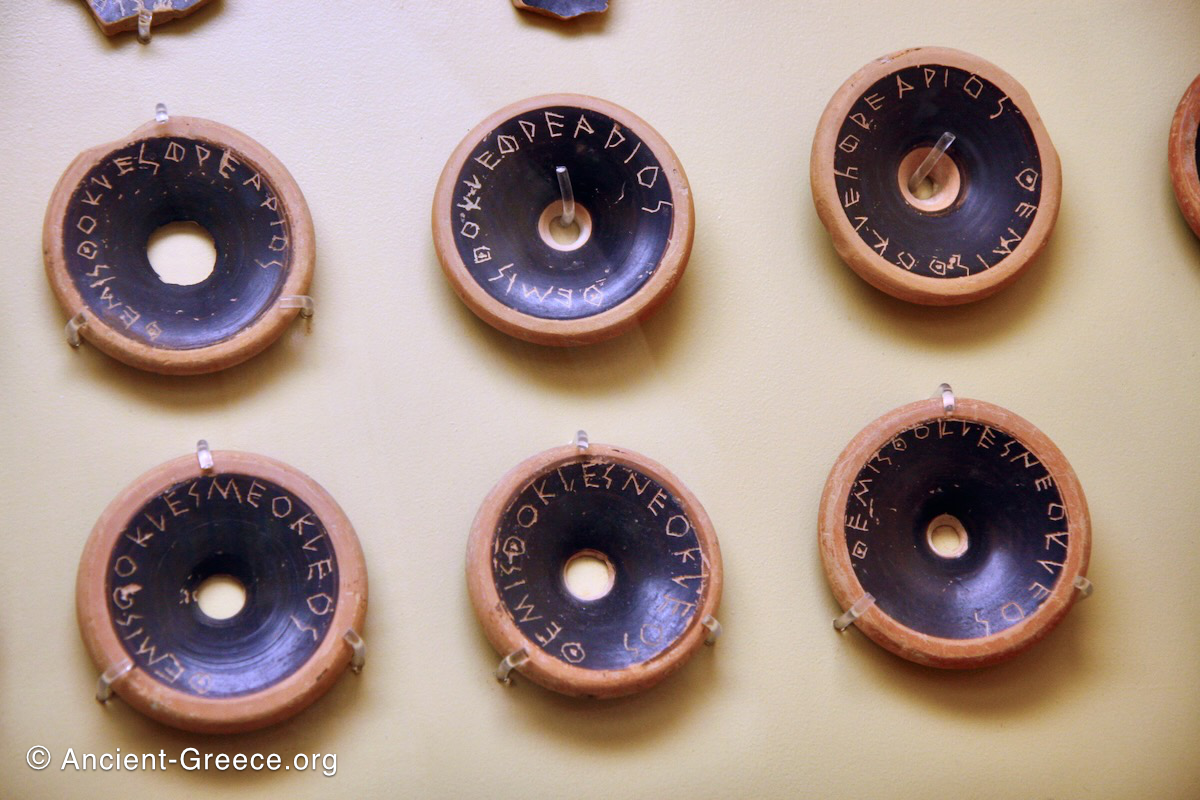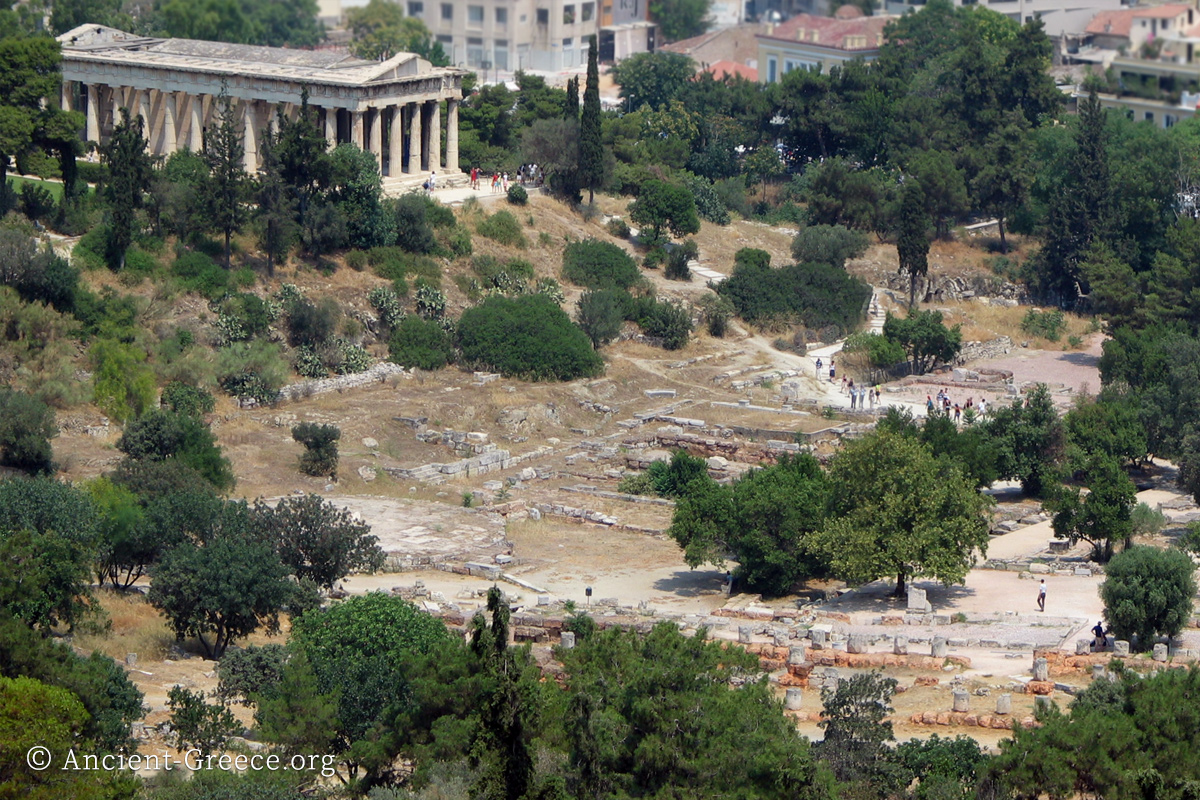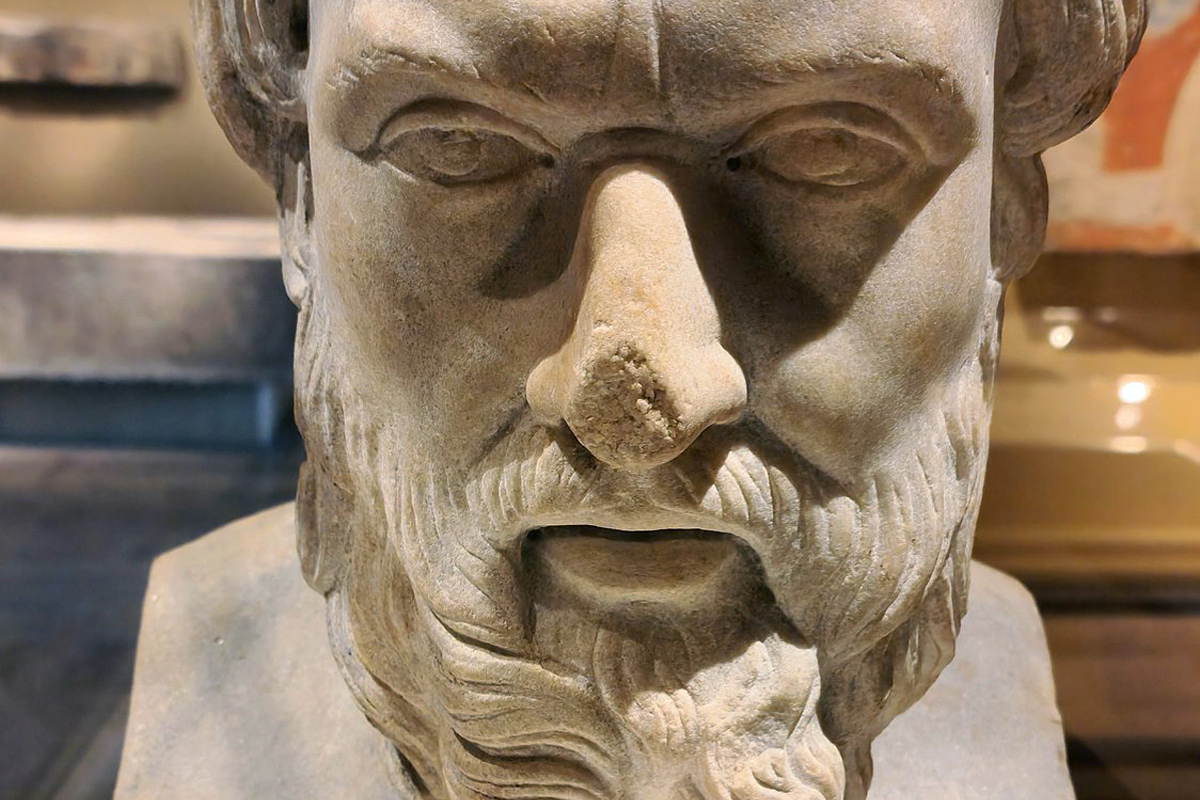
On this page:
The Archaeological Museum of the ancient Agora of Athens (Αρχαιολογικό Μουσείο Αρχαίας Αγοράς Αθηνών) is hosted in the Hellenistic Stoa of Atallos, inside the archaeological site.
The Stoa of Attalos was rebuilt in the 1950’s from the ground up with the purpose of storing the artifacts unearthed in the Agora excavations, and to house the museum where the most important items can be exhibited.
The museum’s portico is a beautiful area that gives visitors insight on how an ancient Athenian would feel in its shelter. In Ancient Greece, this part of the stoa would be busy with merchants bartering with buyers behind their benches among the hustle and bustle of a busy marketplace. Today, the stoa’s portico is a peaceful area where visitors find refuse from the sun and relax among statues from the Greco-Roman era.
The museum highlights include art and objects, dating all the way back to the fourth millennia. Of unique interest are the numerous artifacts directly related to the Athenian democratic functions during the Classical period.
Citizens’ Life
Numerous artifacts that give us insight in ancient Athenian’s political participation and every-day life are displayed in the Agora Museum. Here are some highlights (Click each image for more details or read below):
Top row, left to right:
- Fragment from a kleroterion, which was an allotment machine that allowed for the random selection of citizens to the various civic offices. On the bottom corner of the same photo are examples of the bronze tickets (pinakia) that were inserted into the slots. An attached mechanism to the left of the slots allowed for the random selection process.
- Bronze ballots used by jurors to vote on a case. These are typical of the 4th c. BCE, and similar ones were use up until the 2nd c. BCE. In this photo, note how the bottom-left ballot has a hollow axle, otherwise it is identical to the others. This insured secrecy during the voting process because, ballots being identical otherwise, it was easy for a juror to conceal the ends of the ballot with their fingers as they cast their vote for guilt or innocence.
- One of the more controversial policies of Athenian democracy was Ostracism. This blunt instrument of the state allowed its citizens to vote for the ten-year expulsion from the city of a person they deem dangerous or undesirable. In many cases prominent Athenian citizens with valuable contributions to the state were forced to leave Athens. In many cases citizens would ostracize a citizen out of fear that they might have amassed too much political power or influence, and in many more cases they became the victims of overzealous political opponents. Themistocles, the hero of the Persian Wars is one striking example of a prominent Athenian citizen who despite his contributions was forced to leave Athens and to die in exile. In the museum there are several examples ostraca. In this photo, the top fragment bears the name of Pericles, the middle one was cast by someone who wanted Kimon ostracized, and the bottom one reads “Aristeides of Lysimachus”.
Second row:
- Ostraca incised with the name Themistocles.
- Athenian coins: an Obol from the 6th century BCE (top left), a 5th century Tetradrachm (top center), a 5th century drachma (top right), and partial view of a 4th century Tetradrachm (bottom center).
- Stele with a report of the State Auctioneers (pletai). It records the leasing of mines near Lavrion. 367-6 BCE.
Such inscriptions were common in Athenian democracy. They were part of government’s accountability for public funds and deeds. - Detail of the Stele with a report of the State Auctioneers (pletai). It records the leasing of mines near Lavrion. 367-6 BCE.
- Mycenaean offerings from the burial of a young man. 1400-1350 BCE.
Third row:
- Gold jewelry from an Early Geometric cremation burial of a pregnant wealthy woman (from the N.W. foot of the Areopagus). About 850 BCE.
- Gold signet ring with representation of Minotaur leading two female captives. 1400-1375 BCE.
- Pyxis with a lid handle in the form of three horses. Late Geometric period, 725-700 BCE.
- Perfume bottle in the form of a kneeling athlete knotting the diadem–a ribbon that identifies him as a winner–on his head (diadumenos). Circa 540 BCE.
- Oil lamps with mythological themes.
Sculpture
Several sculptures from different centuries are displayed in the museum. Highlights include:
Top row, left to right:
- Fragmented neolithic statuette of a reclining female figure. 4th millennium BCE.
- Statue of Nike from the acroterion of the Stoa of Zeus Agoraios. Circa 415 BCE.
- Marble statue of Satyr holding a goat.Circa 150 BCE.
Second row:
- Bronze head of a Nike. 420-415 BCE.
- Head of a Herm stele from the northwest corner of the Agora. 2nd c. BCE.
- Head of a Triton from the Odeion of Agrippa. Circa 150 CE.
- Bust of Antoninus Pius. 138-161 BCE.
- Votive female statue from Apollon Patroos. Circa 330 BCE
Third row:
- Statue of a goddess (probably Aphrodite). Early 4th c. BCE.
- Statue of a Nymph holding an hydria (water jar), from the Nymphaeum.
Created in the 2nd century AD, but modeled after a well-known 5th century Aphrodite type. - Marble statuette of Aphrodite from the Hellenistic period.
- Marble statuette of Heracles of the Farnese type, from the Roman period.
- Base of a sculpture with a relief carving depicting a man getting on and off a chariot. This was a typical event in the Panathenaic festival, and this monument was apparently erected in the honor of one of the winners.
4th c. BCE.
Pottery
Top row, left to right:
- Two burnished conical jars. Burnishing the fired jar by hand sealed the surface and gave it a high sheen. 3200-2800 BCE.
- Beaker jug with glaze and two handles. 1400-1375 BCE.
- Ash urn with a single-handled cup used as a lid. It was found during excavations of a burial of an affluent, pregnant female. Circa 850 BCE.
Second row:
- Black-burnished ceramic jar (left), and a two-handled spouted jar with dark on light decoration. Between the two jars there is a fragment from a neolithic stone figurine found in the Agora excavations.
- Two beaked jugs (ewer) with spiral decorations. Circa 1400-1350 BCE.
- Ceramic bowl with three handles and a decoration representing lilies. 1400 BCE.
- Two ceramic vessels from the 15th century BCE. The one in the back has an ogival canopy decoration, and the one laying on its side is from Canaan.
Third row:
- Wine cooler. Once submerged, the holes on its side allowed water to circulate and to speed up cooling of the wine inside it.
- Three examples of Protoattic pottery.
Back: Oipe with lion’s head decoration.
Circa 675 BCE. Left: Neck of a hydria with a decoration depicting ten dancing women. 700-675 BCE. Right: Amphora fragment with bird decoration. Circa 650 BCE - Kylix, with the work of Chairias painter, depicting a kneeling woman. Circa 510-500 BCE.
- Fragment of a kylix with a painting of a warrior. Circa 480 BCE.












































